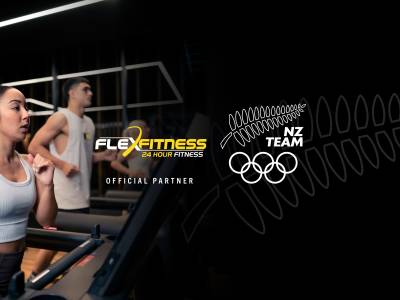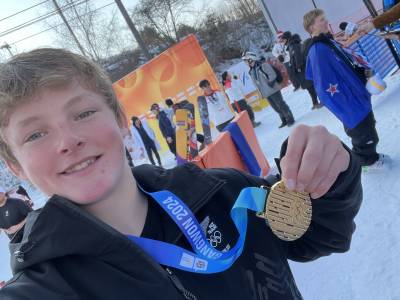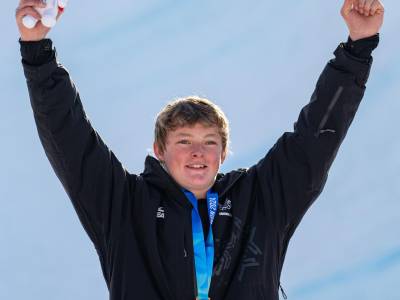Originally known as water ballet, the pastime was first practised in the late 19th century with the first recorded competition held in the German capital Berlin in 1891.
Artistic swimming routines consist of a variety of moves including 'figures' (leg movements), arm sections, and lifts (also known as highlights). Swimmers must not touch the bottom of the pool and scull or use advanced methods of treading water to avoid doing so. They must also not be out of the water for more than 10 seconds.
There are two types of routines - free routines and technical routines where a number of specified elements must be performed.
Following scoring system changes made in October 2022, there are now two judging panels - five judges assessing elements and five artistic impression. There are also three technical controllers scoring difficulty, and three more observing synchronisation.
Coaches must now indicate the elements in their athletes' routines in advance which are given a degree of difficulty.
What are the different types of Synchronised Swimming?
There are several disciplines in artistic swimming with women contesting the vast majority of them. As well as the Olympic events of women's duets and teams (combining free and technical routines), there are solos (men and women), mixed duets, mixed team and women's acrobatic.
Artistic Swimming and the Olympics
Synchronised swimming was a demonstration sport at the 1952 Olympic Games in Helsinki, but did not become a full Olympic sport until Los Angeles 1984 when medals were awarded in women's duet and women's solo.
The women's team event was introduced at Atlanta 1996 at the expense of the other two synchro disciplines but, from Sydney 2000 onwards, there have been team and duet competitions.
Tokyo 2020 in 2021 was the first Games where the sport was known as artistic swimming.
Men will be able to compete in artistic swimming for the first time at Paris 2024 with up to two permitted per NOC in the eight-person team event.
Artistic swimming routines consist of a variety of moves including 'figures' (leg movements), arm sections, and lifts (also known as highlights). Swimmers must not touch the bottom of the pool and scull or use advanced methods of treading water to avoid doing so. They must also not be out of the water for more than 10 seconds.
There are two types of routines - free routines and technical routines where a number of specified elements must be performed.
Following scoring system changes made in October 2022, there are now two judging panels - five judges assessing elements and five artistic impression. There are also three technical controllers scoring difficulty, and three more observing synchronisation.
Coaches must now indicate the elements in their athletes' routines in advance which are given a degree of difficulty.
Is Artistic Swimming the same as Synchronised Swimming?
In a word, yes. In July 2017, swimming's international federation FINA (now World Aquatics) decided to change the name of the sport from synchronised swimming to artistic swimming.
What are the different types of Synchronised Swimming?
There are several disciplines in artistic swimming with women contesting the vast majority of them. As well as the Olympic events of women's duets and teams (combining free and technical routines), there are solos (men and women), mixed duets, mixed team and women's acrobatic.
Artistic Swimming and the Olympics
Synchronised swimming was a demonstration sport at the 1952 Olympic Games in Helsinki, but did not become a full Olympic sport until Los Angeles 1984 when medals were awarded in women's duet and women's solo.
The women's team event was introduced at Atlanta 1996 at the expense of the other two synchro disciplines but, from Sydney 2000 onwards, there have been team and duet competitions.
Tokyo 2020 in 2021 was the first Games where the sport was known as artistic swimming.
The United States and Canada were initially the top nations in Olympic synchronised swimming but Russia (and ROC at Tokyo 2020) has dominated since 2000, winning every gold medal on offer in duet and team events.
Men will be able to compete in artistic swimming for the first time at Paris 2024 with up to two permitted per NOC in the eight-person team event.
Artistic swimming routines consist of a variety of moves including 'figures' (leg movements), arm sections, and lifts (also known as highlights). Swimmers must not touch the bottom of the pool and scull or use advanced methods of treading water to avoid doing so. They must also not be out of the water for more than 10 seconds.
There are two types of routines - free routines and technical routines where a number of specified elements must be performed.
Following scoring system changes made in October 2022, there are now two judging panels - five judges assessing elements and five artistic impression. There are also three technical controllers scoring difficulty, and three more observing synchronisation.
Coaches must now indicate the elements in their athletes' routines in advance which are given a degree of difficulty.
Is Artistic Swimming the same as Synchronised Swimming?
In a word, yes. In July 2017, swimming's international federation FINA (now World Aquatics) decided to change the name of the sport from synchronised swimming to artistic swimming.
What are the different types of Synchronised Swimming?
There are several disciplines in artistic swimming with women contesting the vast majority of them. As well as the Olympic events of women's duets and teams (combining free and technical routines), there are solos (men and women), mixed duets, mixed team and women's acrobatic.
Artistic Swimming and the Olympics
Synchronised swimming was a demonstration sport at the 1952 Olympic Games in Helsinki, but did not become a full Olympic sport until Los Angeles 1984 when medals were awarded in women's duet and women's solo.
The women's team event was introduced at Atlanta 1996 at the expense of the other two synchro disciplines but, from Sydney 2000 onwards, there have been team and duet competitions.
Tokyo 2020 in 2021 was the first Games where the sport was known as artistic swimming.
The United States and Canada were initially the top nations in Olympic synchronised swimming but Russia (and ROC at Tokyo 2020) has dominated since 2000, winning every gold medal on offer in duet and team events.
Men will be able to compete in artistic swimming for the first time at Paris 2024 with up to two permitted per NOC in the eight-person team event.
Artistic swimming routines consist of a variety of moves including 'figures' (leg movements), arm sections, and lifts (also known as highlights). Swimmers must not touch the bottom of the pool and scull or use advanced methods of treading water to avoid doing so. They must also not be out of the water for more than 10 seconds.
There are two types of routines - free routines and technical routines where a number of specified elements must be performed.
Following scoring system changes made in October 2022, there are now two judging panels - five judges assessing elements and five artistic impression. There are also three technical controllers scoring difficulty, and three more observing synchronisation.
Coaches must now indicate the elements in their athletes' routines in advance which are given a degree of difficulty.
Is Artistic Swimming the same as Synchronised Swimming?
In a word, yes. In July 2017, swimming's international federation FINA (now World Aquatics) decided to change the name of the sport from synchronised swimming to artistic swimming.
What are the different types of Synchronised Swimming?
There are several disciplines in artistic swimming with women contesting the vast majority of them. As well as the Olympic events of women's duets and teams (combining free and technical routines), there are solos (men and women), mixed duets, mixed team and women's acrobatic.
Artistic Swimming and the Olympics
Synchronised swimming was a demonstration sport at the 1952 Olympic Games in Helsinki, but did not become a full Olympic sport until Los Angeles 1984 when medals were awarded in women's duet and women's solo.
The women's team event was introduced at Atlanta 1996 at the expense of the other two synchro disciplines but, from Sydney 2000 onwards, there have been team and duet competitions.
Tokyo 2020 in 2021 was the first Games where the sport was known as artistic swimming.
The United States and Canada were initially the top nations in Olympic synchronised swimming but Russia (and ROC at Tokyo 2020) has dominated since 2000, winning every gold medal on offer in duet and team events.
Men will be able to compete in artistic swimming for the first time at Paris 2024 with up to two permitted per NOC in the eight-person team event.
Artistic swimming routines consist of a variety of moves including 'figures' (leg movements), arm sections, and lifts (also known as highlights). Swimmers must not touch the bottom of the pool and scull or use advanced methods of treading water to avoid doing so. They must also not be out of the water for more than 10 seconds.
There are two types of routines - free routines and technical routines where a number of specified elements must be performed.
Following scoring system changes made in October 2022, there are now two judging panels - five judges assessing elements and five artistic impression. There are also three technical controllers scoring difficulty, and three more observing synchronisation.
Coaches must now indicate the elements in their athletes' routines in advance which are given a degree of difficulty.
Is Artistic Swimming the same as Synchronised Swimming?
In a word, yes. In July 2017, swimming's international federation FINA (now World Aquatics) decided to change the name of the sport from synchronised swimming to artistic swimming.
What are the different types of Synchronised Swimming?
There are several disciplines in artistic swimming with women contesting the vast majority of them. As well as the Olympic events of women's duets and teams (combining free and technical routines), there are solos (men and women), mixed duets, mixed team and women's acrobatic.
Artistic Swimming and the Olympics
Synchronised swimming was a demonstration sport at the 1952 Olympic Games in Helsinki, but did not become a full Olympic sport until Los Angeles 1984 when medals were awarded in women's duet and women's solo.
The women's team event was introduced at Atlanta 1996 at the expense of the other two synchro disciplines but, from Sydney 2000 onwards, there have been team and duet competitions.
Tokyo 2020 in 2021 was the first Games where the sport was known as artistic swimming.
The United States and Canada were initially the top nations in Olympic synchronised swimming but Russia (and ROC at Tokyo 2020) has dominated since 2000, winning every gold medal on offer in duet and team events.
Men will be able to compete in artistic swimming for the first time at Paris 2024 with up to two permitted per NOC in the eight-person team event.
Artistic swimming routines consist of a variety of moves including 'figures' (leg movements), arm sections, and lifts (also known as highlights). Swimmers must not touch the bottom of the pool and scull or use advanced methods of treading water to avoid doing so. They must also not be out of the water for more than 10 seconds.
There are two types of routines - free routines and technical routines where a number of specified elements must be performed.
Following scoring system changes made in October 2022, there are now two judging panels - five judges assessing elements and five artistic impression. There are also three technical controllers scoring difficulty, and three more observing synchronisation.
Coaches must now indicate the elements in their athletes' routines in advance which are given a degree of difficulty.
Is Artistic Swimming the same as Synchronised Swimming?
In a word, yes. In July 2017, swimming's international federation FINA (now World Aquatics) decided to change the name of the sport from synchronised swimming to artistic swimming.
What are the different types of Synchronised Swimming?
There are several disciplines in artistic swimming with women contesting the vast majority of them. As well as the Olympic events of women's duets and teams (combining free and technical routines), there are solos (men and women), mixed duets, mixed team and women's acrobatic.
Artistic Swimming and the Olympics
Synchronised swimming was a demonstration sport at the 1952 Olympic Games in Helsinki, but did not become a full Olympic sport until Los Angeles 1984 when medals were awarded in women's duet and women's solo.
The women's team event was introduced at Atlanta 1996 at the expense of the other two synchro disciplines but, from Sydney 2000 onwards, there have been team and duet competitions.
Tokyo 2020 in 2021 was the first Games where the sport was known as artistic swimming.
The United States and Canada were initially the top nations in Olympic synchronised swimming but Russia (and ROC at Tokyo 2020) has dominated since 2000, winning every gold medal on offer in duet and team events.
Men will be able to compete in artistic swimming for the first time at Paris 2024 with up to two permitted per NOC in the eight-person team event.








